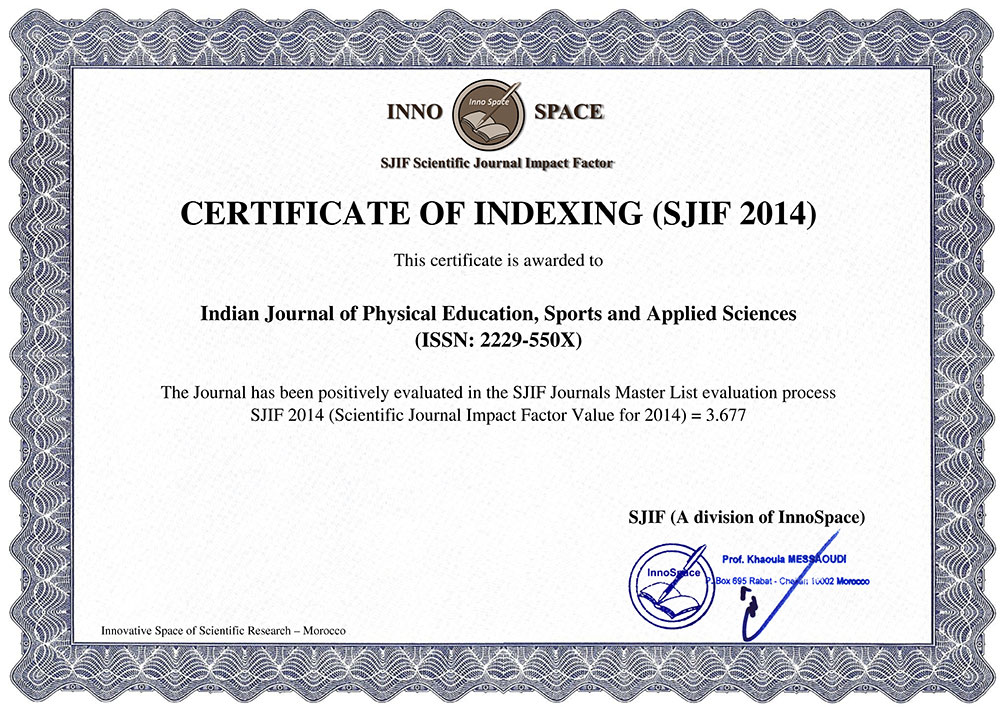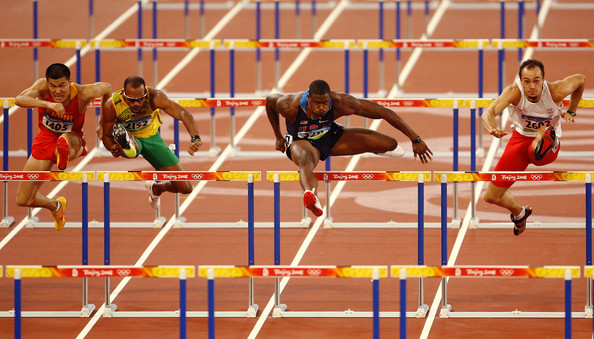PERSONALTY AND ACHIEVEMENT OF RANVEER SINGH- INTERNATIONAL VOLLEYBALL PLAYER AS WELL AS COACH : A CASE STUDY
Volume 7-Number 4, October, 2017 November 5, 2017| Author name : | Dr. Hasan Mehdi | ||||
|---|---|---|---|---|---|
| Page no : | 40-45 | Volume : | 7 | Issue : | 4 |
doi no.: 05-2016-44975451, DOI Link :: http://doi-ds.org/doilink/11.2017-97178586/
Dr. Hasan Mehdi 1
Affiliation:
1 Assistant Professor, Department of Physical Education, Maulana Azad Institute of Humanities Science & Technology, Mahmudabad, Sitapur.
ABSTRACT
The purpose of this research was to study relative efficacy of 16 personality factors, in predicting self confidence, achievement motivation and locus of control, taking into account the internal relations among the personality factors. The standardized tools personality questionnaire Cattell’s 16 personality factors questionnaire, Sanjay Vohra’s Levenson’s Locus of Control of control scale, Self Confidence questionnaire (SCQ), Achievement Motivation Bhargava’s achievement motive test were used to collect data a sample is a case study of volleyball player representing state, national, and international level the descriptive statistical analysis were used to analyze the data. The findings of the study : The potency of personality factor A, B, C, D, E, F, H, I, L, M, N, O, Q1, Q2, Q3 and Q4 taken together in the prediction of Self Confidence, Achievement Motivation and Locus of Control of an a volleyball player. Personality factor the maximum contribution and factor F, H & Q3 makes considerable contribution for prediction.
Keywords: Personality, Achievement, Locus of Control, self Confidence, Volleyball Player.
DOWNLOAD FULL TEXT: 
BIBLIOGRAPHY
Allport, G.W. (1937), Personality: A Psychological Interpretation, New York, Holt.
Allport, G.W. (1955): Becoming: Basic Consideration for a psychology of Personality, New Haven.
Cattell, R.B. (1946). The Description and Measurement of Personality. New York: World.
Cattell, R.B. (1950). Personality: A Systematic, Theoretical and Factual Study. New York. McGraw Hill.
Cratty, Bryant J. (1967) Social Dimensions of Physical Activity. New Jersey: Prentice-Hall, Inc., p.100.
Charles K. Brightbill. (1971) Animated Environmental factors influencing activity: Family. Leonard A. Larsan (Ed). Encyclopedia of Sports Science. New York: The Macmillan Co., p.146
David, H. Clarke and Harrison, H. Clarke. (1970) Research process in physical Education. Recreation and Health. New Jersey: Prentice Hall. Inc. p.114.
Eysenck, H.J. (1947). Dimensions of Personality. London: Routledge & Kengan Paul.
Gensemer, R.E. (1991). Physical Education Perspectives Inquiry. Application Wm. C. ,U.S.A: (Brown Publishers)
Guilford, J.P. (1956). Fundamental Statistics in Psychology and Education. 3rd Edition, New York: (McGraw-Hill Book Company, Inc.)
Garratty,John A.(1975)The Nature of Biography. New York: Alfred A.Kroft,p.36.
H.W.Odum, and Jocher, Katharine, (1929) An Introduction to Social Research, New York: Henry Holt and Co, p.229.
Ismail, A.H. (1972). Integrated Development. In J.E. Kane (Ed.): Psychological Aspects of Physical Education and Sports .London: Routledge & k. Paul.







